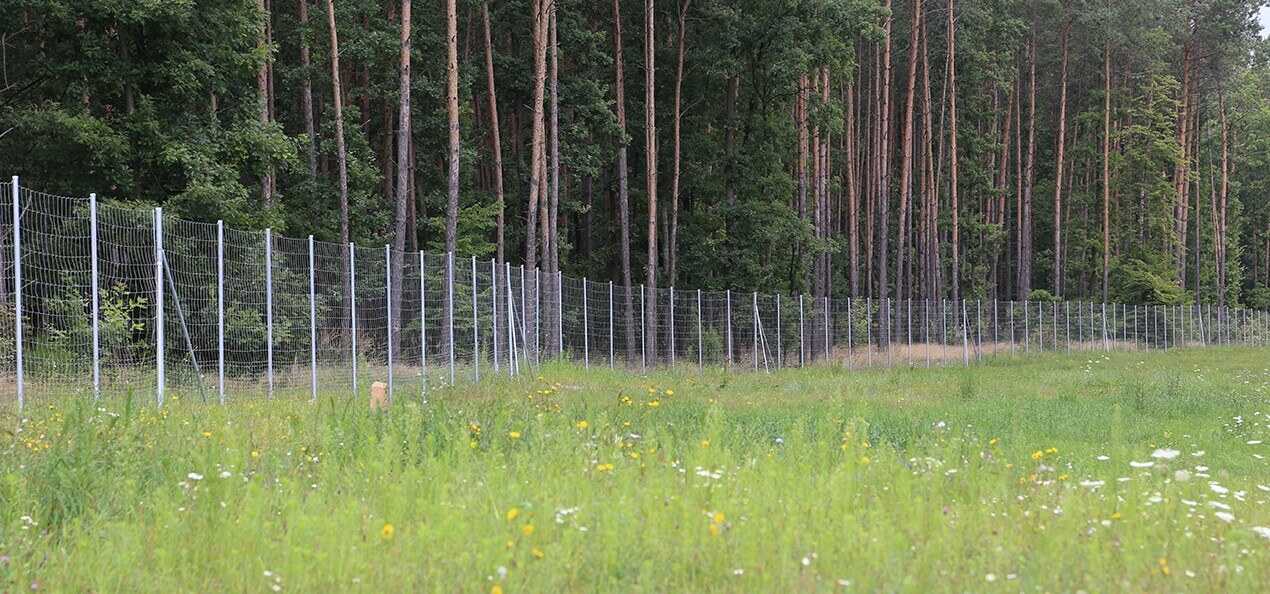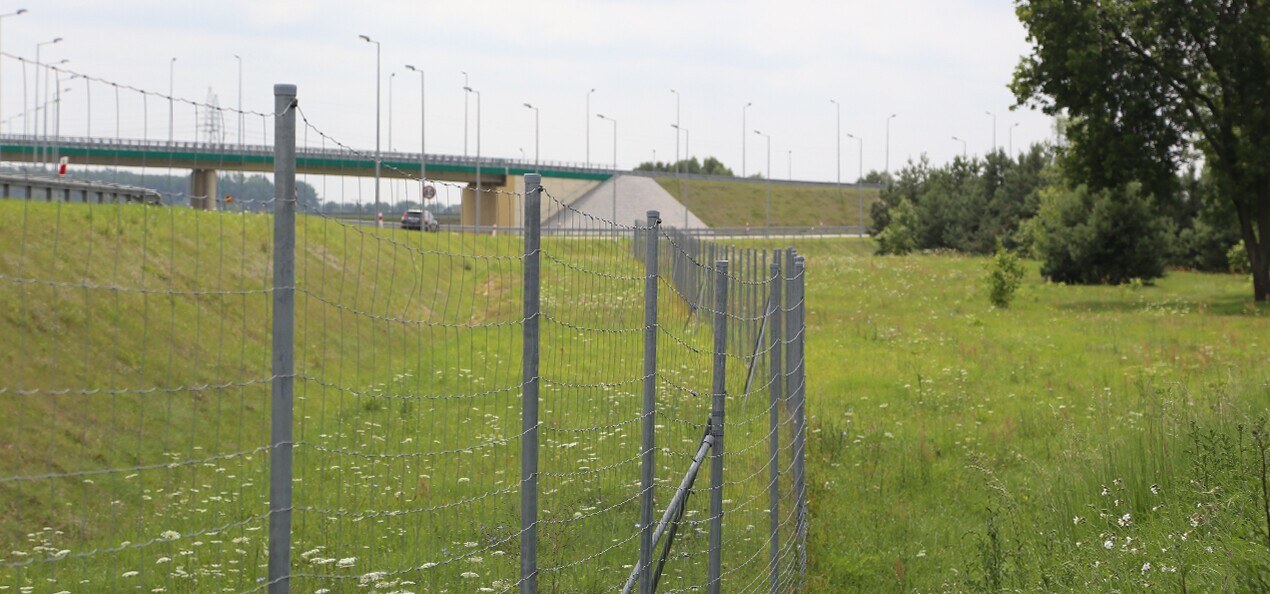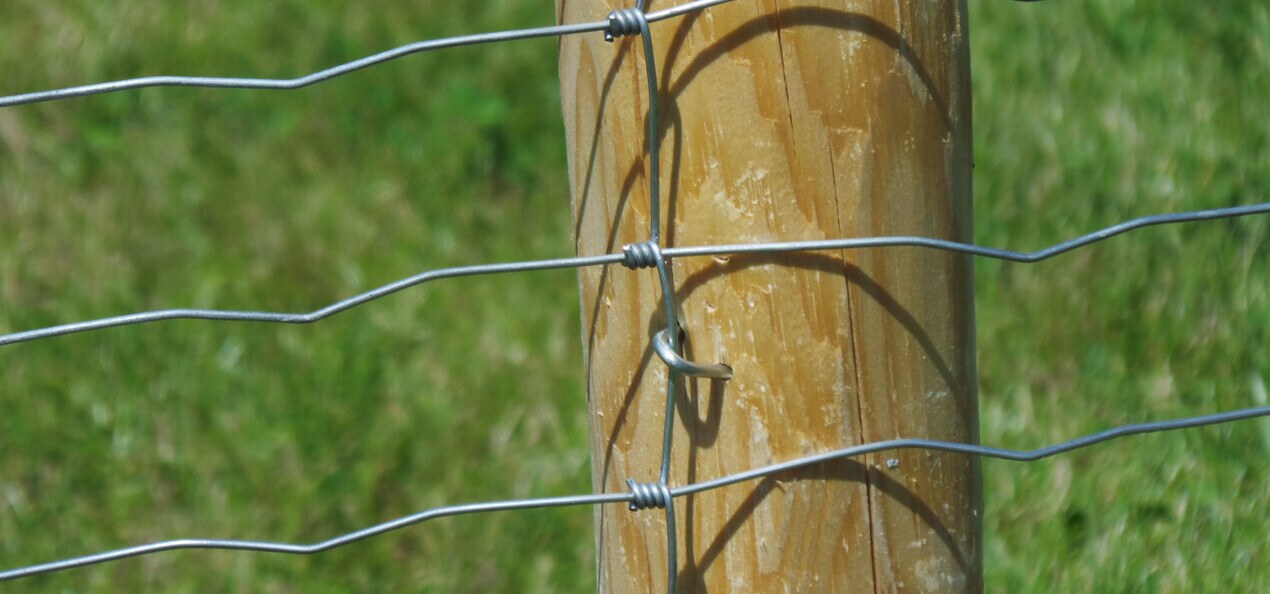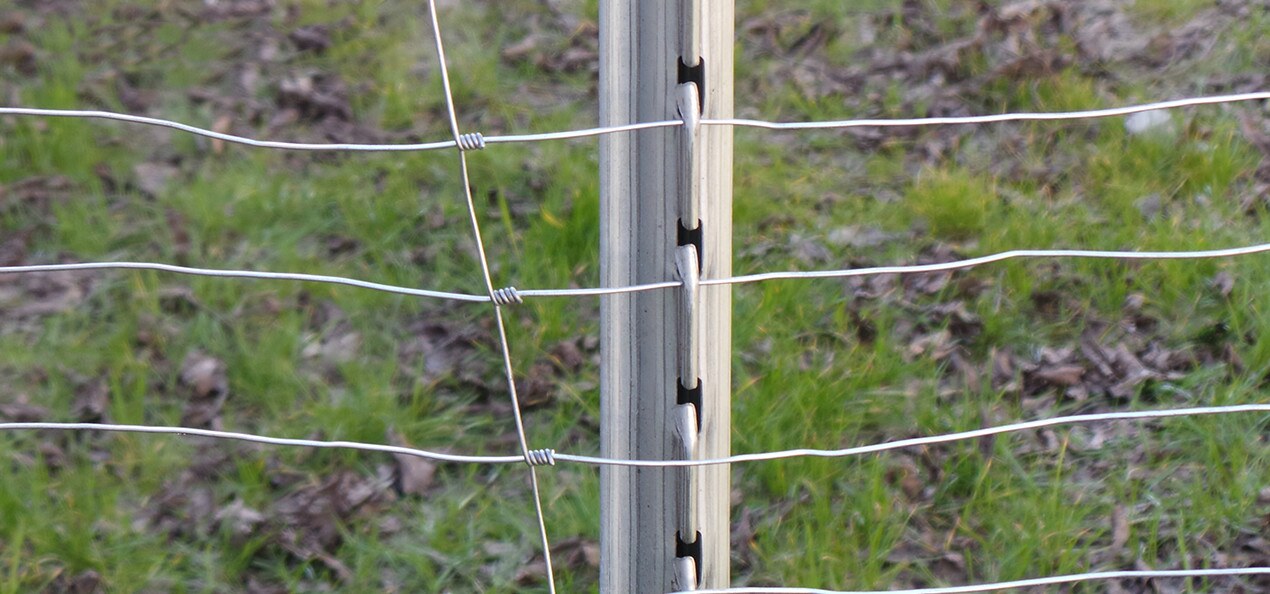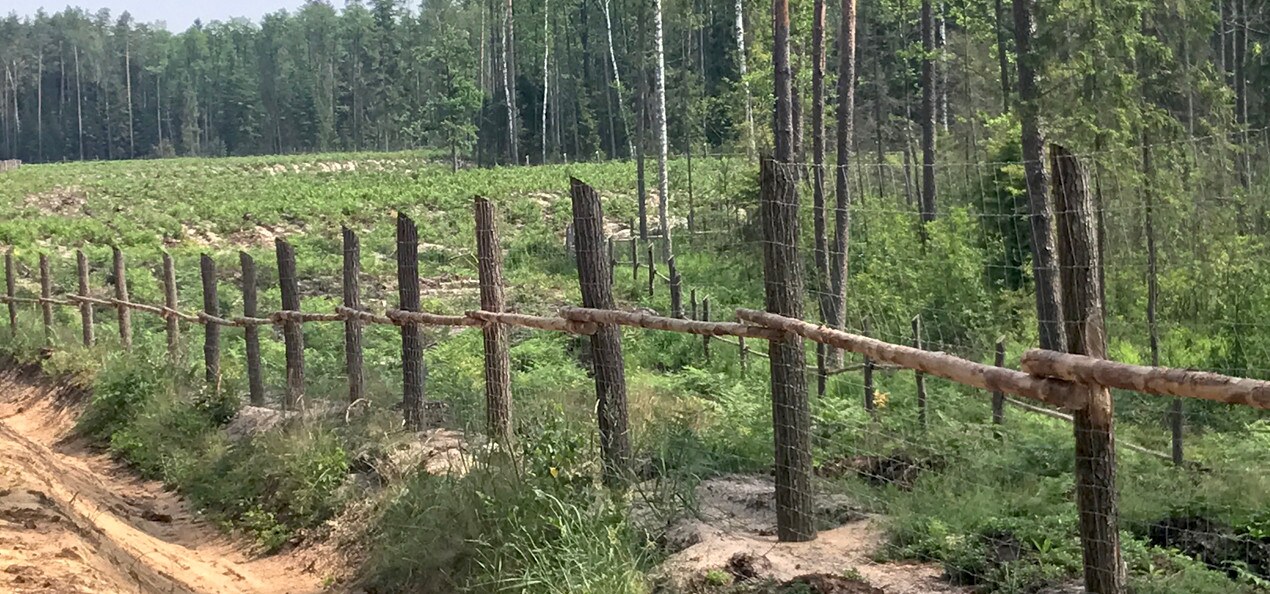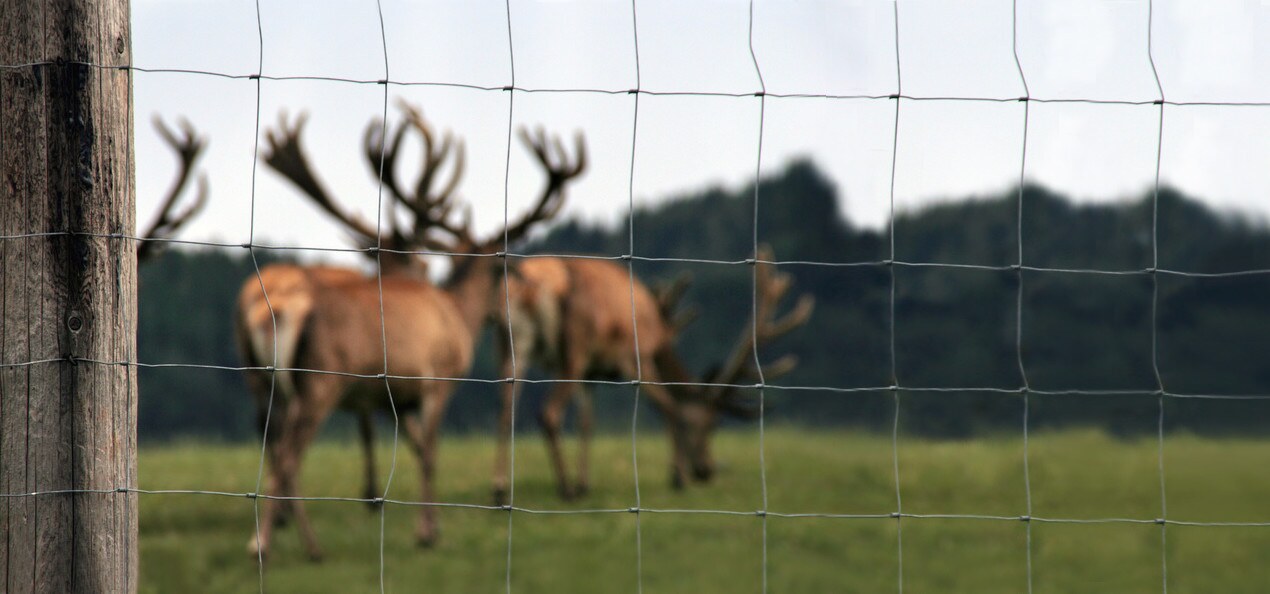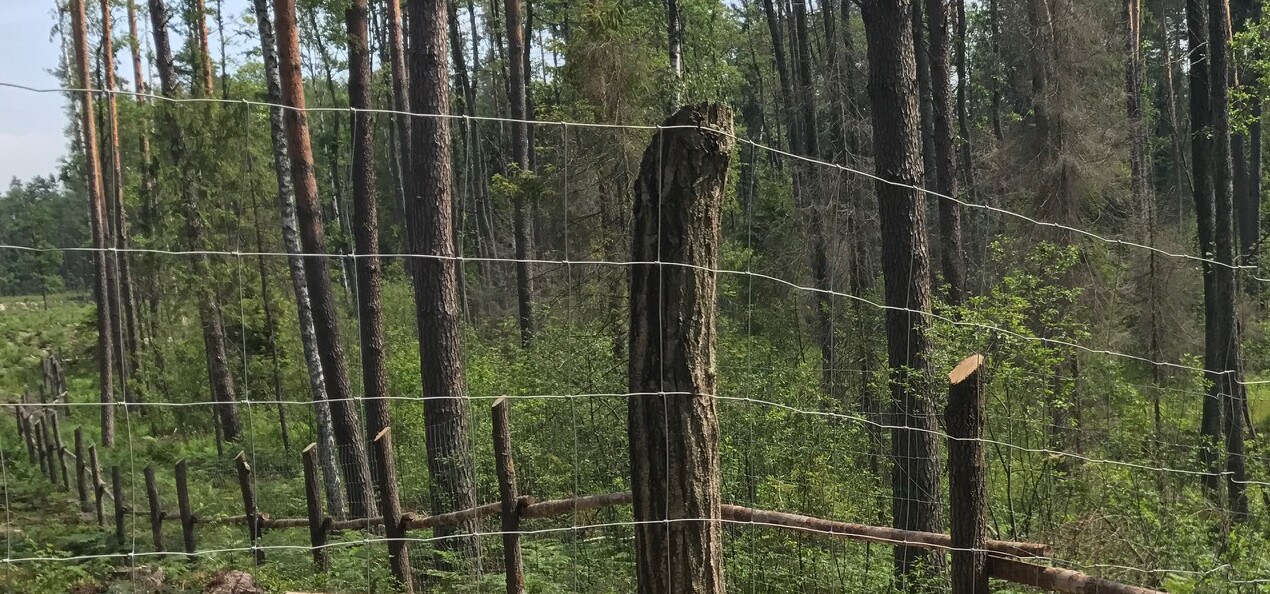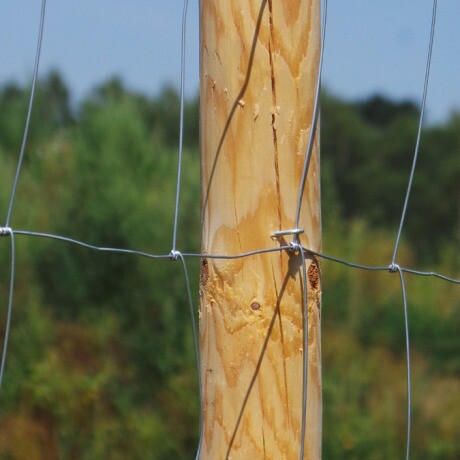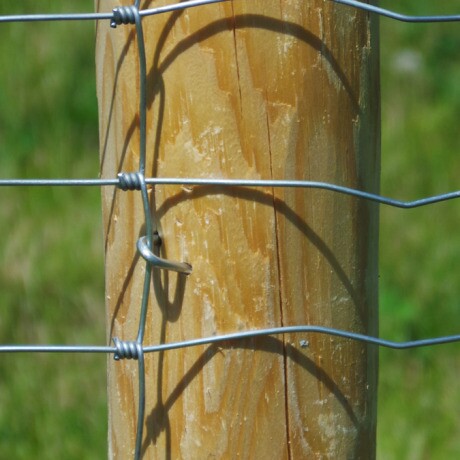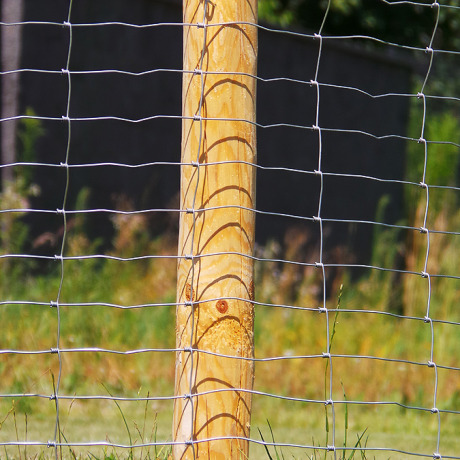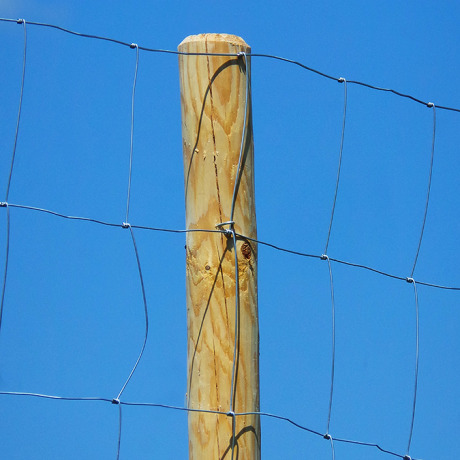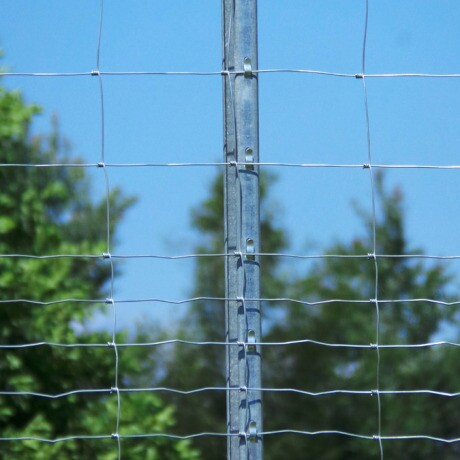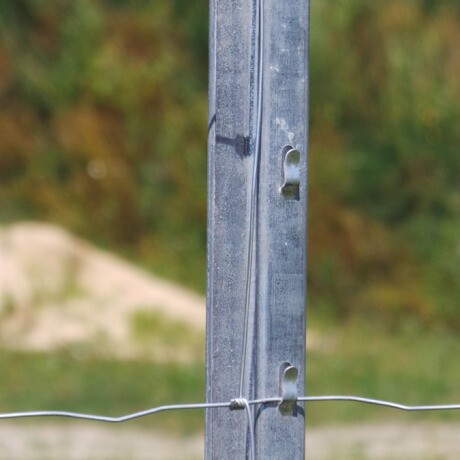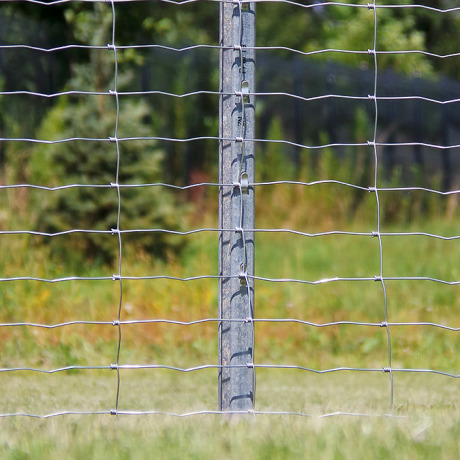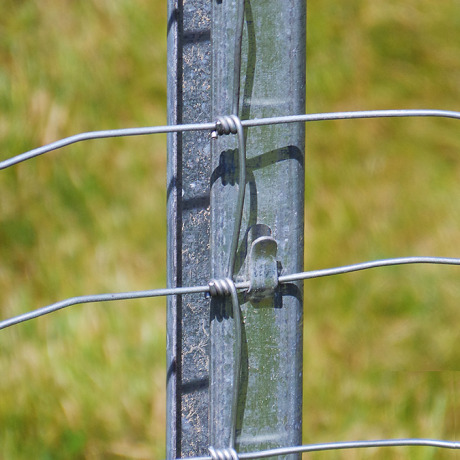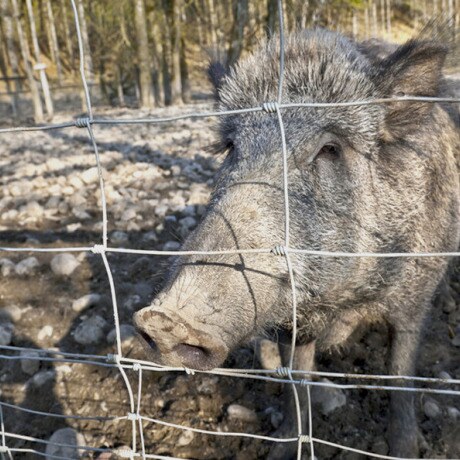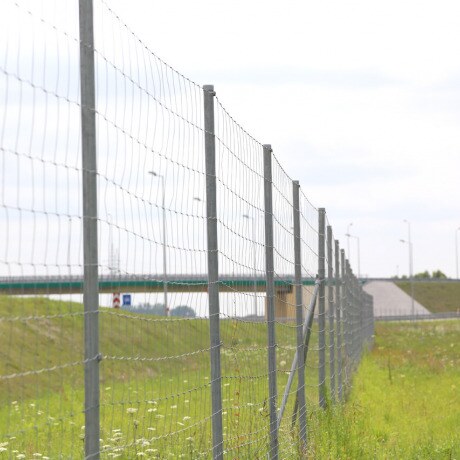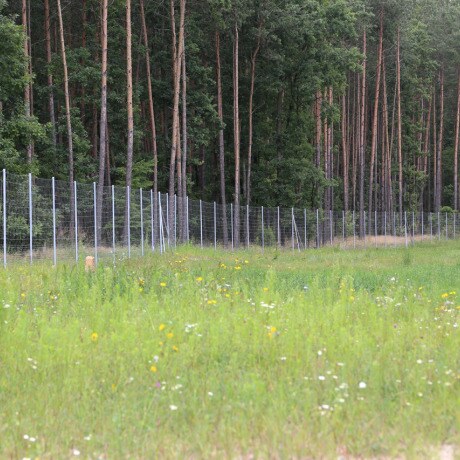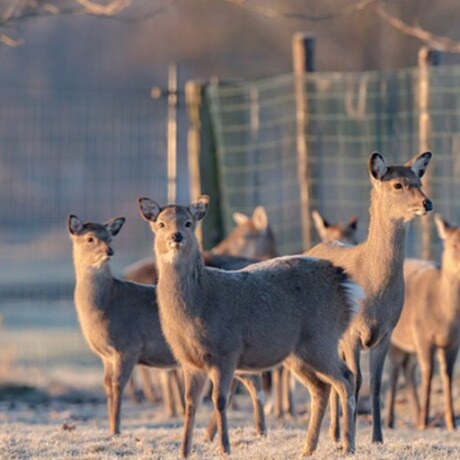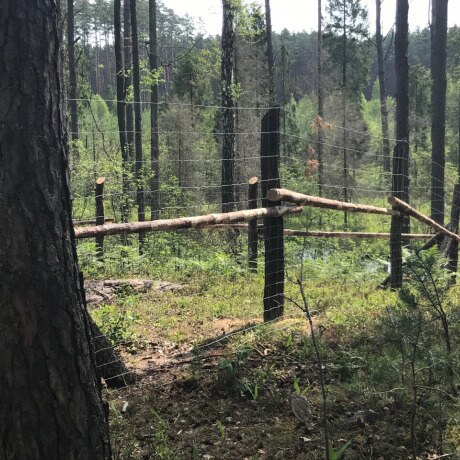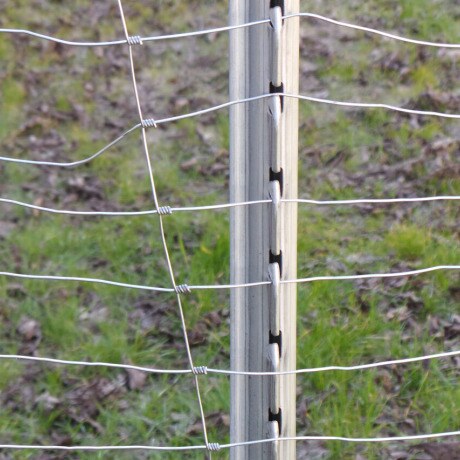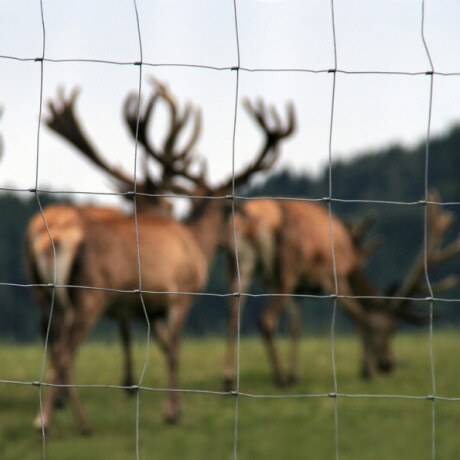Fencing for forestry and roads
Forestry mesh fences among the cheapest types of fencing on the market. Easy to assemble, they enable quick and efficient fencing of the area. Their primary objective is to protect silviculture and agricultural crops from wildlife. Forestry mesh fences are also erected around orchards, livestock paddocks, pastures and summer and recreation plots. The type of mesh should be chosen taking into account the species of animals that do most damage in the area. It is also worth recognizing other threats, such as acts of vandalism or stray dogs. In general, the more dense, higher and robust the net, the more secure the protection against animals, thieves and other unwanted guests.
Highway wire mesh
Highway wire mesh is e special kind of forestry mesh. Its main task is to protect highways, expressways and railway lines from wildlife. Intrusion of a deer or wild boar could be tragic for both humans and animals. To prevent such situations, strong highway mesh fences are installed along the road. They generally have thickened meshes or an additional net with small meshes in the bottom part. This element prevents small animals from passing through. Our company is a distinguished manufacturer of highway wire mesh. Our products protect many roads in the country and abroad. We produce meshes from thick, impact-resistant wires and coat them with a thick layer of zinc. Thanks to the above process, they stay durable for many years in the most difficult weather conditions.
Methods of forestry mesh installation
The base and frame of forestry fencing are support posts. You can choose between classic wooden posts or metal posts. The wire mesh is attached to the wooden posts with staples, i.e. nails bent in the shape of the letter “U”. The steel posts have special mounting brackets, which makes fastening comfortable and fast.
If the mesh is to be a temporary protection, wooden posts are the best choice. They are used, most often with type L forestry wire mesh, to build temporary fences. If, on the other hand, we are thinking about fencing for a longer period of time, it is worth investing in solid metal posts. This type of posts is usually combined with strong type M meshes.
The most frequently selected solution are pine posts. They are cheap and widely available. Unfortunately, wood is sensitive to moisture, strong winds and excessive sunshine. Extending its life, however, is relatively easy. Just remember to impregnate it properly. This way, it will not deteriorate, rot or decay as quickly. You may also consider buying oak or acacia posts. These species are pricier, but are tough and resistant to harsh weather conditions.
The necessary elements when fixing the forest net on wooden posts are staples, i.e. U-shaped bent nails. They are used to fasten individual parts of the grid to the posts quickly and effectively.
The second option involves steel posts for forestry wire mesh. More expensive than wood, but definitely more durable. Made of stainless steel for stability and strength. They are resistant to corrosion as well as to the harmful effects of water and changing temperatures. They are equipped with special brackets (hooks) to facilitate installation. Ideal for building forest fences that are to serve for many years.
The installation of forestry mesh on metal posts also requires good-quality mounting wires. They are used to connect the mesh with other elements of the fence.
How to build forestry wire mesh fencing?
The construction of forestry wire mesh fencing is simple, but it is advisable to plan the individual stages of work. Appropriate spacing of the posts is an important issue. Many people wonder how long in metres should the space be between the posts and how to properly stretch the forestry mesh. This type of mesh is generally lightweight, so the posts are to be spaced 2 to 5 meters. The optimal and recommended distance between the posts is 3 metres. For make it easier, we provide instructions concerning installation of the forestry mesh in correct manner.
- Preparing the site.
The area on which the forestry mesh is to be placed should be levelled and tidied. Impurities and obstacles such as stones, bushes, boughs, trees, etc. are to be removed. The installation of the forestry mesh itself requires no technical knowledge or specialized tools. Protective gloves, pliers, cutters and shovels will come in handy. - Laying out fence lines
Place a wooden pile in any corner of the area to be fenced. Drive the piles in the remaining corners. Then stretch the string and tie it to the piles. The next step is to determine the holes for the posts. Many people wonder how densely the posts should be put for forestry mesh. The optimal spacing depends on the terrain, but it is usually 3 metres. Starting with any corner piles, drive in more piles every 3 meters. This is how we determine post spacing. - Fastening the mesh on support posts.
Start building the fence by erecting corner posts. They have to be reinforced with angle posts. They are inserted at 2/3 of the height of the corner post. Angle posts stabilize and strengthen the whole structure. Unwind a piece from the mesh roll and fix it with staples or hooks and wires depending on the type of post. - Installation of the mesh on intermediate posts.
Drive the intermediate posts along the fence line. Then stretch the remaining part the mesh over the entire length of the fencing and rest it vertically on the intermediate posts. Next task is to fasten the forestry wire mesh to the posts. Remember that the wires must be able to move horizontally. The mesh must not be rigidly fastened. Otherwise, it may break on the post. The individual rolls are to be connected to each other with horizontal wires. - Safety and precision.
Be cautious during the work Special attention should be paid to the ends of horizontal wires. Protruding pieces should be bent immediately after installation. We must also remember to do all the work carefully and thoroughly. Correctly installed wire mesh looks aesthetically pleasing and remains operational for a long time.
STAPLES AND OTHER ACCESSORIES FOR FORESTRY WIRE MESH
The basic elements of forestry wire mesh fencing include the mesh itself and wooden or steel posts. However, the installation of the structure would not be possible without additional accessories.
When thinking about building a fence made of forestry mesh, one must not forget about the staples. The key task of the staples is to stabilize the corner posts. Diagonally arranged posts strengthen the vertically placed ones. In addition, auxiliary accessories can also be supplied. They are not indispensable, but they do help achieve optimal mesh tension. These accessories include:
- mesh tensioners,
- additional tension devices,
- tension wires,
- supporting profiles,
- metal straps.
To sum up, installation of the forestry wire mesh does not require the use of machines or specialized tools. Several elements and accessories are used during the work. Some of them are necessary, while others make building the fence easier and faster.




